Ramen culture in Japan shows no sign of slowing down. Premium shops elevate soup to gourmet status, while experimental broths and vegan options broaden the menu. Yet regional bowls remain the soul of this culinary art. Whether you crave miso‑rich warmth in Hokkaido or garlicky depth in Kumamoto, use this guide to discover the perfect bowl in every prefecture—and savour the flavours that make Japanese ramen extraordinary.
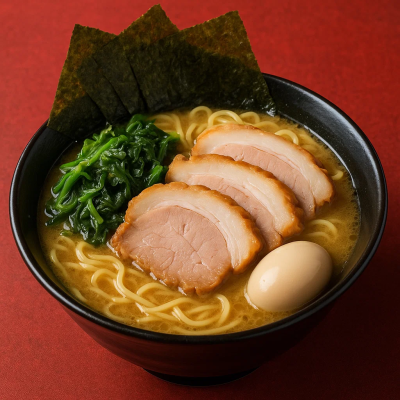

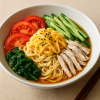
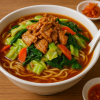

Best Ramen in Japan: Top Regional Dishes and Prefecture‑by‑Prefecture Guide
Japanese ramen has come a long way from its humble beginnings. Today, dedicated chefs treat each bowl as a work of art, selecting ingredients with care and simmering broths for hours until flavours meld. Traditional bases like soy, miso, salt and tonkotsu remain popular, but innovation is everywhere: seafood‑infused soups, chicken‑paitan and plant‑based broths delight diners seeking something new.
Beyond these broader trends, ramen remains a source of local pride. Each of Japan’s 47 prefectures has developed its own style influenced by climate, history and available ingredients. Exploring regional bowls gives travellers a deeper understanding of Japan’s culinary diversity—and plenty of delicious memories. Below, dishes are grouped by geographic region to help you plan your slurping route. Each entry highlights a signature bowl and what makes it special.
Hokkaido and Tohoku
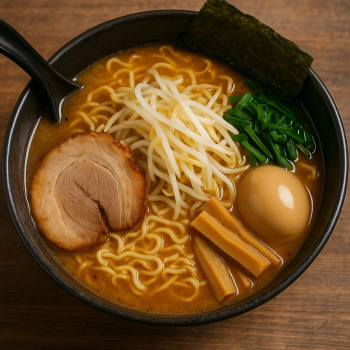
Hokkaido
Sapporo’s hearty miso‑tonkotsu broth warms locals through long winters. Yellow noodles support toppings like char siu, corn and butter, while bamboo shoots add crunch. It’s sweet, savoury and satisfying.

Aomori
Aomori’s salty soy broth is flavoured with dried sardines (niboshi). Thin noodles soak up the fishy umami; slices of pork and green onion round out the bowl. It’s a briny hit in Japan’s far north.
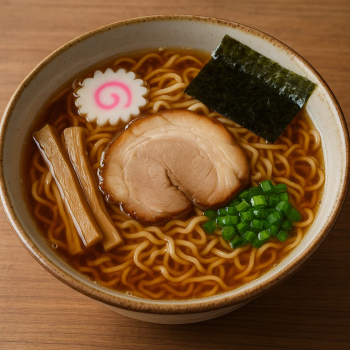
Iwate
This port‑town ramen features a clear chicken–soy soup with straight, thin noodles. Minimal toppings—usually pork and bamboo shoots—allow the delicate broth to shine. Simple and elegant.
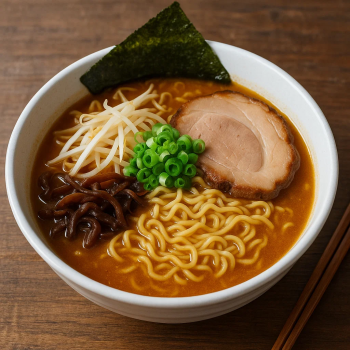
Miyagi
Locally made Sendai miso gives this broth a deep savouriness. Chicken and pork bones create a balanced soup; medium noodles, char siu, scallions and nori complete the warming bowl.

Akita
Akita’s unique bowl uses shottsuru (fermented fish sauce). A clear chicken‑sea‑bream broth carries subtle ocean notes, complemented by thin noodles, pork and scallions for a gently salty finish.

Yamagata
Invented in Yamagata, cold ramen features chilled noodles in a light chicken or sardine broth with cucumber, tomato, egg and char siu. It’s refreshing in summer yet enjoyed year‑round.

Fukushima
Thick curly noodles swim in a clear soy‑based broth made from pork, sardines and chicken. Toppings like fatty pork, green onion and bamboo shoots lend texture and richness.
Kanto Region

Ibaraki
This robust bowl uses a garlicky soy broth packed with liver, vegetables and beaten egg. It’s designed to energise labourers, hence the “stamina” name, and appeals to anyone craving bold flavours.

Tochigi
Sano ramen pairs a clear soy broth with hand‑rolled noodles made using mineral‑rich water. Simple toppings—char siu and bamboo shoots—let the springy noodles take centre stage.

Gunma
Gunma’s modern twist foams tonkotsu broth into a light mousse. Paired with char siu and scallions, this airy topping melts into the noodles, creating a creamy yet delicate texture.

Saitama
In Saitama, a clear chicken‑soy broth meets medium noodles. Toppings range from roast pork to spinach and nori. The mellow, savoury flavour makes this bowl a comfortable introduction for newcomers.

Chiba
Inspired by Chinese tantanmen, this ramen features chilli oil, garlic and ground pork in a soy broth. Sesame seeds and scallions add nutty aroma, resulting in a fiery yet balanced meal.

Tokyo
Traditional Tokyo ramen blends chicken, pork bones, vegetables, kelp and bonito for a nuanced soy broth. Curly noodles come topped with pork, bamboo shoots and soft‑boiled egg. Jiro‑kei, by contrast, offers huge portions with thick noodles and lots of garlic.

Kanagawa
This style mixes pork and chicken bone broths with soy. Thick noodles carry spinach, seaweed and slices of pork belly. The hearty yet balanced soup is a Yokohama staple.
Chubu and Hokuriku
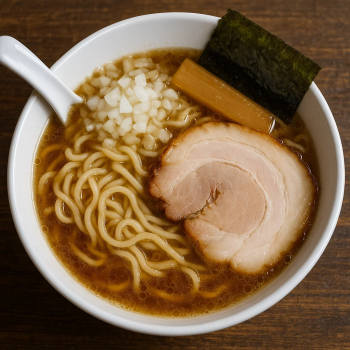
Niigata
Developed for factory workers, this dark soy broth is enriched with pork back fat. Thick noodles support diced onions, nori and pork, creating a salty, fatty bowl that keeps out the cold.
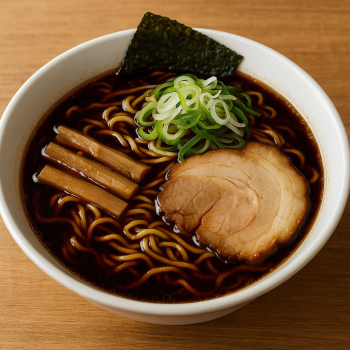
Toyama
Toyama’s inky broth is loaded with soy sauce and black pepper. Thick noodles, green onions and pork slices complement the salty, robust soup originally designed for labourers needing extra salt.

Ishikawa
In Ishikawa, curry and ramen meet. A mildly spiced curry soup surrounds medium noodles and tonkatsu; scallions and bamboo shoots add crunch. It’s aromatic and reflects Kanazawa’s flair for fusion.
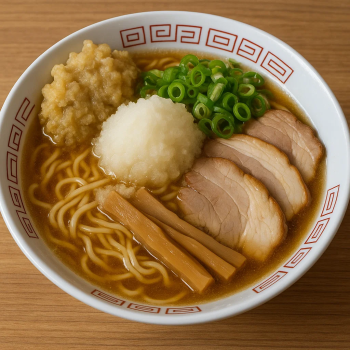
Fukui
A light soy broth topped with mounds of grated daikon radish provides a peppery kick. Thin noodles, pork and scallions make this refreshing bowl suitable in any season.

Yamanashi
Yamanashi’s ramen features a miso‑chicken broth thickened by local wheat or taro. Chewy noodles and braised vegetables create a rustic, nourishing meal suited to mountain travel.
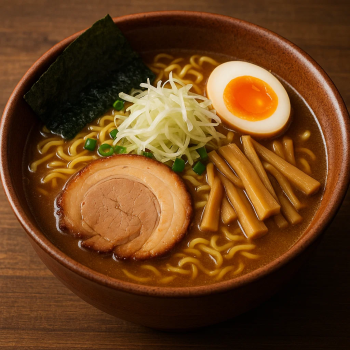
Nagano
Shinshu miso offers a sweet‑savory balance. Rich broth, medium noodles and generous vegetables create a cosy bowl that warms travellers in Nagano’s alpine climate.

Gifu
This mountain‑town ramen has a clear soy broth made from chicken and dried fish. Thin noodles absorb subtle flavours; bamboo shoots, scallions and pork add texture without overwhelming the soup.
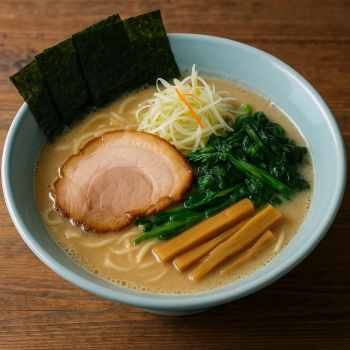
Shizuoka
Shizuoka’s soy‑milk broth combines creaminess and nuttiness. Delicate noodles float alongside sakura shrimp and seasonal vegetables, creating a coastal bowl that’s light yet satisfying.
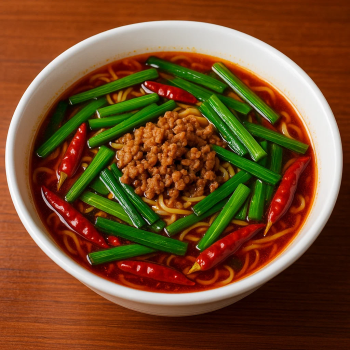
Aichi
Despite its name, this ramen is a local invention: a spicy soy broth brimming with minced pork, garlic and chilli. Sesame and scallions complete the fiery profile.
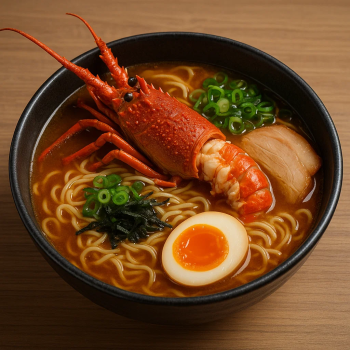
Mie
Mie’s luxurious ramen draws on lobster shells simmered with miso and soy. The resulting broth is sweet and savoury, complemented by springy noodles and fresh greens—perfect for a special occasion.
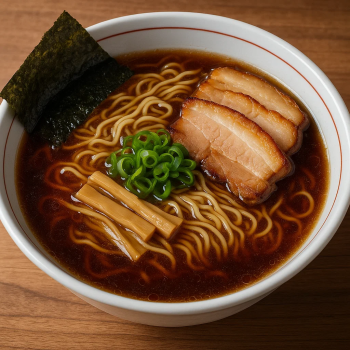
Shiga
Using spring water from Lake Biwa, this clear soy broth is understated. Firm noodles are topped with lake fish or chicken and bamboo shoots, offering a taste of Shiga’s serene landscape.
Kansai Region
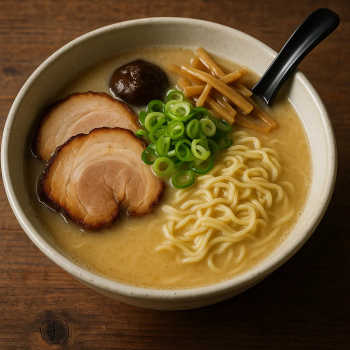
Kyoto
A creamy white chicken bone broth is paired with straight noodles, spinach, scallions and often a hint of citrus zest. Its refined, silky texture reflects Kyoto’s culinary sophistication.
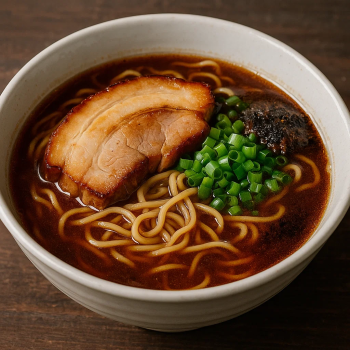
Osaka
Osaka’s ramen combines savoury chicken and soy flavours. Medium‑thick noodles are topped with roast pork and green onions; some shops add burnt miso for a smoky twist. It’s comforting and hearty.

Kobe
Hyogo’s take on tonkotsu blends pork bones and vegetables for a creamy broth that isn’t too heavy. Straight noodles soak up the soup, with sesame, bamboo shoots and marinated egg offering complexity.

Nara
This spicy, garlicky ramen from Tenri city packs stir‑fried pork and vegetables into a thick broth. Thick noodles deliver a dish designed to energise—hence its stamina moniker.

Wakayama
Wakayama’s ramen mixes pork bone broth and soy. Straight noodles support roast pork, fish cake and bamboo shoots. Its slightly sweet, salty flavour represents local tastes.
Chugoku and Shikoku

Tottori
Rare in Japan, this ramen uses beef bone broth. Thin noodles and toppings like green onion and bamboo shoots create a mild, savoury bowl that stands apart from pork‑based styles.
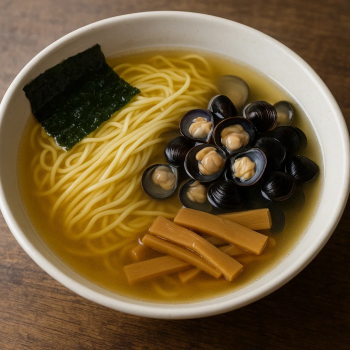
Shimane
Shimane’s clear broth is infused with shijimi clams from Lake Shinji. Straight noodles, seaweed and bamboo shoots accent the briny, umami‑rich soup inspired by local waters.
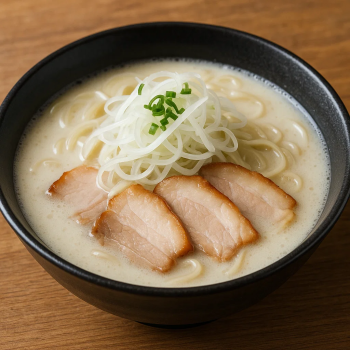
Kurashiki
In Kurashiki, a milky tonkotsu broth topped with sliced onions and pork offers a lighter take on creamy ramen. The gentle flavour appeals to those seeking richness without heaviness.
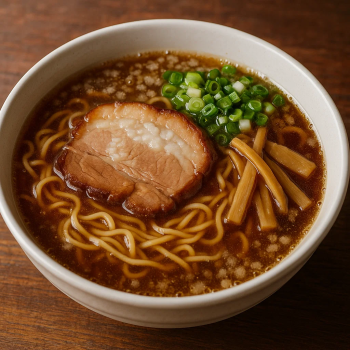
Hiroshima
This soy‑based ramen combines chicken, pork and seafood stocks and is topped with melted pork back fat. Flat noodles and pork, bamboo shoots and scallions deliver a warming, satisfying bowl.
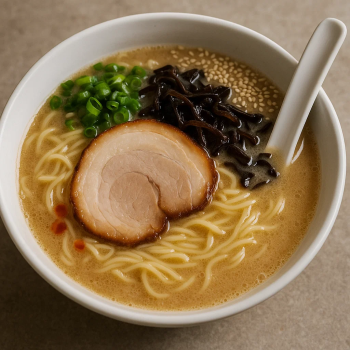
Yamaguchi
Yamaguchi’s tonkotsu is lighter than Kyushu’s and may incorporate citrus or chilli oil for brightness. Thin noodles, wood ear mushrooms and sesame seeds provide contrast, resulting in a nuanced soup.

Tokushima
This tonkotsu–soy broth has a mild sweetness reminiscent of sukiyaki. Thin noodles come with pork belly and sometimes a raw egg. It’s comforting and pleasantly savoury.

Kagawa
Kagawa’s ramen offers a clear soy broth and firm wheat noodles. Toppings may include chicken, green onion and yuzu peel, providing a refreshing contrast to richer bowls.
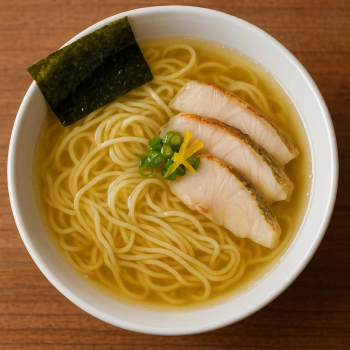
Ehime
Ehime’s coastal bowl features a clear sea bream broth with salt. Thin noodles, fish slices, seaweed and citrus zest create a delicate yet satisfying taste that celebrates the sea.
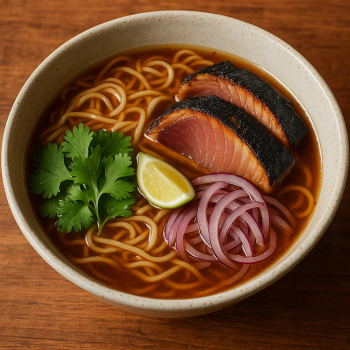
Kochi
Kochi’s ramen celebrates bonito with a smoky, soy‑based broth. Medium noodles, cilantro, yuzu and red onion give brightness. It’s fragrant, slightly smoky and refreshingly unique.
Kyushu and Okinawa
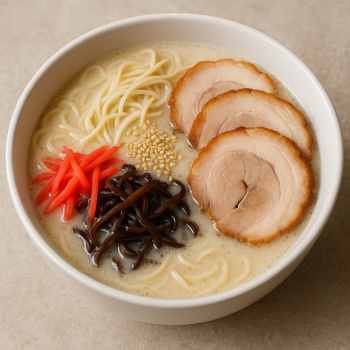
Hakata
A creamy pork bone broth and thin straight noodles define Hakata ramen. Toppings such as char siu, wood ear mushrooms and sesame seeds can be customised with pickled ginger and extra noodles.

Saga
Saga offers a lighter version of tonkotsu. The broth is simmered longer to mellow its flavour; thin noodles and bamboo shoots, green onions and nori complete the gentle bowl.

Nagasaki
Nagasaki’s champon uses a milky chicken‑pork broth filled with seafood and vegetables. Thick noodles soak up the creamy soup, reflecting the city’s Chinese heritage and international influences.

Kumamoto
Kumamoto’s tonkotsu features black roasted garlic oil (mayu) and crunchy garlic chips. Medium‑thick noodles balance the aromatic broth, delivering a bold, garlicky punch.

Oita
Known as torigara ramen, this bowl features a clear chicken broth with a hint of citrus. Thin noodles and tender chicken slices make it clean and refreshing—perfect for lighter appetites.
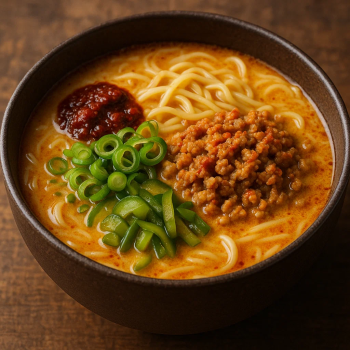
Miyazaki
Miyazaki serves a creamy chicken broth spiked with chilli paste and ground pork. Medium noodles, scallions and pickles add crunch and heat. It’s comfort food with a kick.

Kagoshima
Blending pork, chicken and vegetables, Kagoshima’s tonkotsu–soy broth is mild and slightly sweet. Char siu made from local black pigs, bean sprouts and nori enhance the subtle soup.

Okinawa
Despite the name, Okinawa soba uses thick wheat noodles in a clear pork and bonito broth. Stewed pork belly, fish cake and pickled ginger top the bowl. It bridges ramen and noodle soup traditions unique to Okinawa.
Final Thoughts
Reviews
There are no reviews